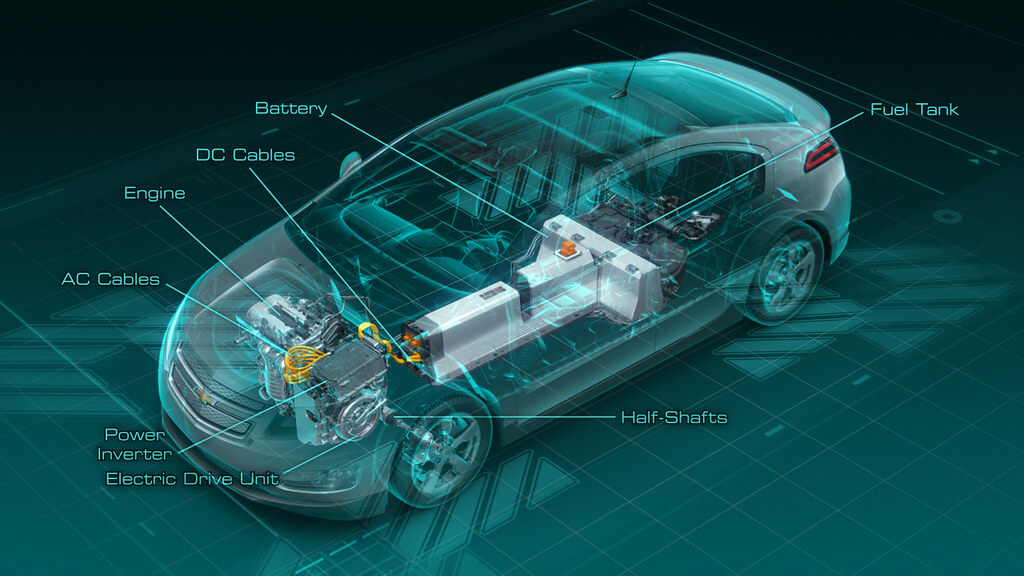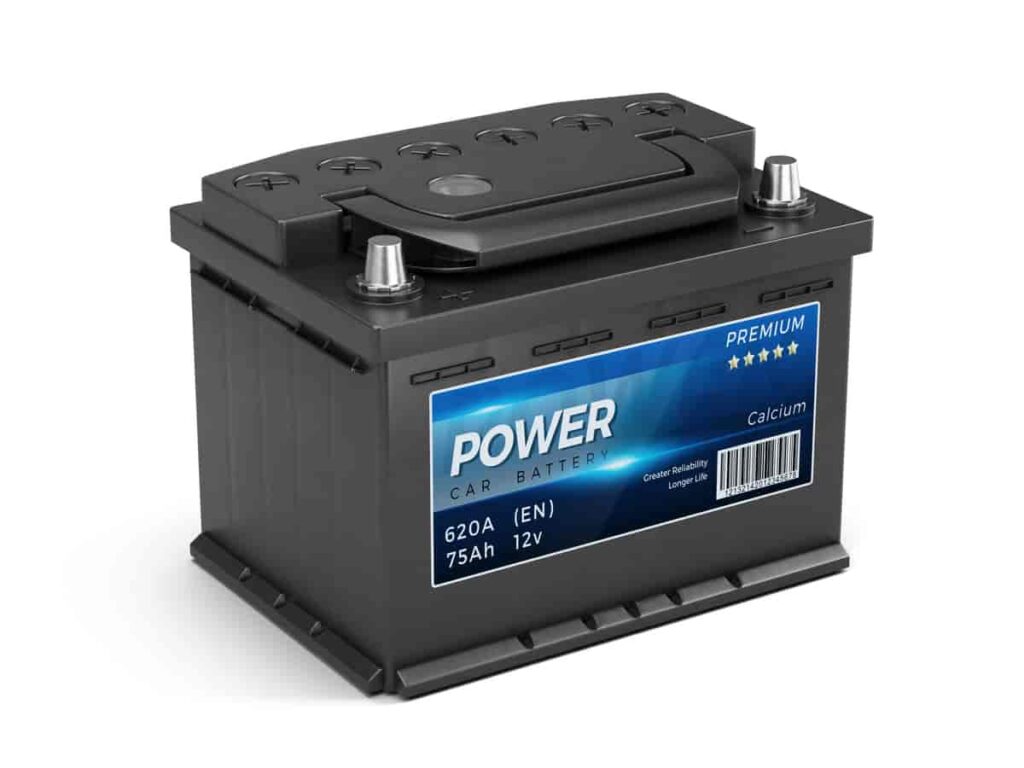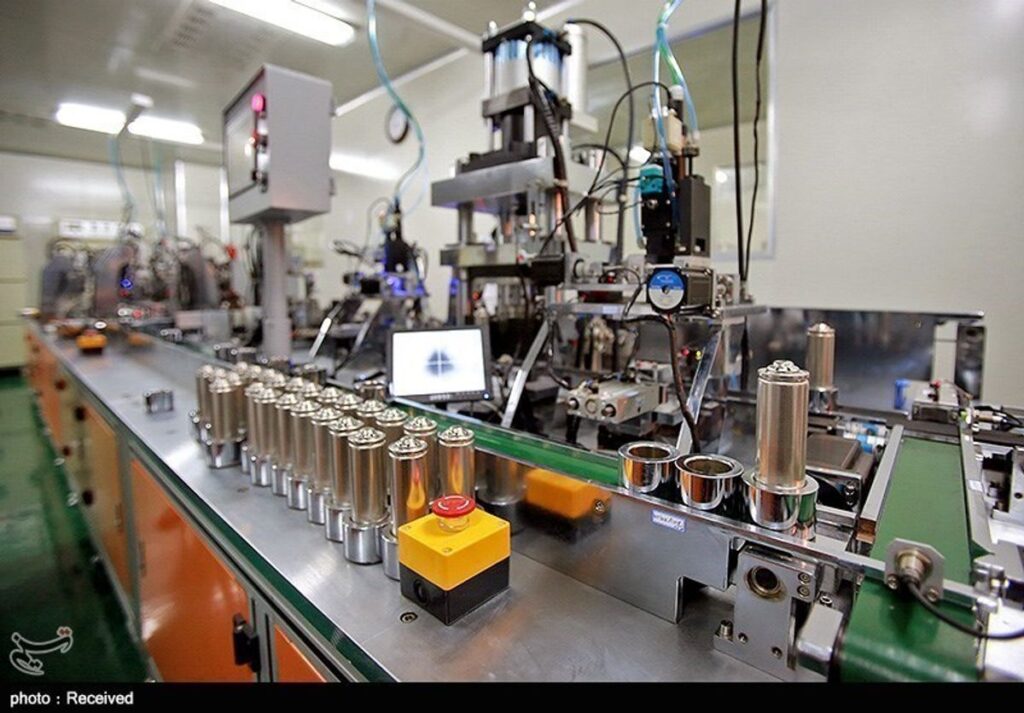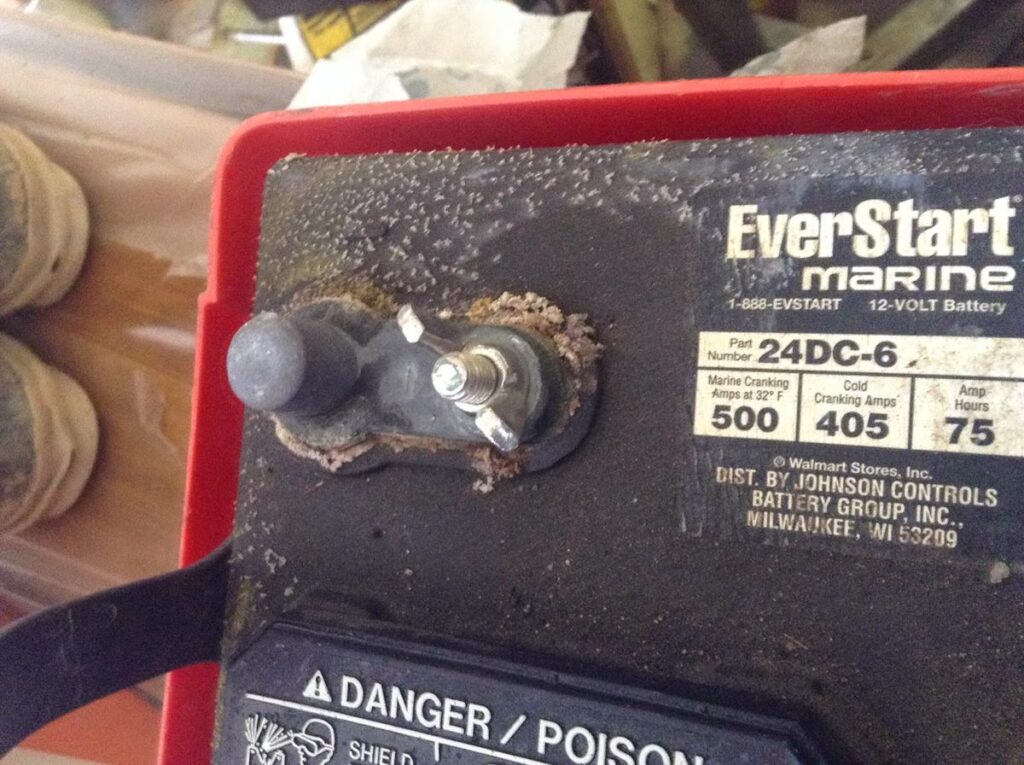Maximizing the Lifespan of Your 12V 100AH Lithium Battery: Tips and Tricks
12V lithium batteries have become the cornerstone for reliable energy storage in a wide array of applications, from electric vehicles to portable electronics. To ensure these batteries deliver their full potential over their intended lifespan, it’s essential to understand and implement best practices for charging, usage, and maintenance. This article offers valuable tips and tricks to help you maximize the lifespan of your 12V lithium battery, with a focus on 12V 100Ah models, which are commonly used across various industries.
Central themes
- Adopt proper charging techniques, including using the ideal voltage and current, and a compatible charger to extend battery life.
- Avoid deep discharges and follow recommended usage patterns to maintain battery health and ensure longevity.
- Understand the comparative advantages of 12V 100Ah lithium batteries and choose the best option for your specific needs.
- Utilize Battery Management Systems (BMS) and control temperature to prevent premature degradation and extend the battery’s lifespan.
- Regularly perform routine checks and understand safety procedures to maintain optimal performance and ensure safe operation.
Table of Contents
Understanding and Optimizing Charging Practices

Identifying the Ideal Charging Voltage and Current
To maximize the lifespan of a 12v 100ah lithium battery, understanding the ideal charging voltage and current is crucial. For a 12-volt battery to have a full charge, the recommended voltage is typically between 12.6-12.8 volts. This voltage range ensures that the electrical pressure is sufficient for a complete charge without causing stress to the battery cells.
Charging a 12V 100ah lithium battery involves several steps to ensure safety and efficiency. The first step is bulk charging, where the charger replenishes up to 80% of the battery’s energy capacity at the maximum voltage and current rating. Once the battery voltage reaches 14.4 volts, the absorption charge phase begins, maintaining a constant voltage while the current decreases until the battery is 98% charged.
It’s important to set charge parameters according to the manufacturer’s recommendations and to use a charger that can handle the specific voltage and current settings. Exceeding these values can lead to battery damage. Monitoring the charging process is also essential, noting the duration and avoiding interruptions for effective charging.
The Importance of Using a Compatible Charger
Using a compatible charger for your 12v 100ah lithium battery is crucial for maintaining its health and longevity. Chargers specifically designed for lithium batteries take into account the unique charging profile required to safely and efficiently charge these types of batteries.
When selecting a charger, consider the following steps:
- Terminal Identification: Match the positive (+) and negative (-) terminals on both the battery and charger to prevent damage.
- Secure Cable Connection: Connect charger cables securely to corresponding battery terminals, avoiding overtightening.
- Check for Safety: Ensure there are no loose connections or exposed wires that may pose a safety risk.
- Smart Charger Features: Look for chargers with features like temperature compensation or maximum charging time to optimize battery performance.
- Read Manufacturer’s Instructions: Understand both charger and battery instructions to avoid confusion during charging.
It’s essential to set the correct charge parameters based on the manufacturer’s guidelines. Overcharging or undercharging can lead to reduced capacity or potential damage, so always ensure these parameters align with the specifications provided by the battery manufacturer.
Remember, using an incompatible charger, such as an AGM battery charger, can be detrimental to your lithium battery. While AGM chargers are designed for different battery chemistry, they may not provide the correct charging profile needed for a lithium battery, leading to suboptimal performance or damage.
Recognizing the Signs of a Fully Charged Battery
Recognizing when a 12V 100Ah lithium battery is fully charged is crucial for maintaining its longevity and performance. To determine this, you can use a voltmeter to measure the voltage across the battery terminals. A fully charged 12V lithium battery typically reaches a voltage near its peak rated voltage. Here are some steps to ensure you recognize a full charge:
- Utilize the charger’s display or monitoring system for real-time information on voltage, current, and temperature.
- Monitor the battery regularly, keeping an eye on temperature and voltage throughout the charging process.
- Act on unusual observations, such as excessive heat or odors, by immediately disconnecting the battery and consulting a professional.
It’s important to avoid overcharging or undercharging to preserve battery health. Regularly inspecting for signs of overheating or abnormal behavior during charging can prevent damage.
By following these guidelines, you can ensure that your 12V 100Ah lithium battery is charged efficiently and safely, optimizing its lifespan and reliability.
Maintaining Battery Health Through Usage Patterns

Avoiding Deep Discharge to Preserve Battery Life
To maximize the lifespan of your 12V 100Ah lithium battery, it is crucial to avoid deep discharges. Deep discharges can significantly shorten the battery’s life by accelerating capacity degradation. It’s recommended to recharge the battery before it drops below a certain level of charge, typically around 20%. This practice helps maintain the battery’s health and ensures a longer service life.
- Partial Charging: Aim to keep the charge level between 20% and 80%.
- Shallow Discharges: Prefer shallow discharges over deep ones.
- Regular Monitoring: Keep an eye on the battery’s state of charge.
By adhering to these guidelines, you not only extend the battery’s lifespan but also maintain its performance over time. Remember, the key to longevity is in how you use and charge the battery, not just in its inherent quality.
Furthermore, understanding the relationship between the depth of discharge and the number of charging cycles is essential. Each deep discharge cycle and full recharge contributes to wear and tear, reducing the battery’s overall capacity. To illustrate, here’s a simple table showing the impact of different discharge depths on battery life:
| Depth of Discharge | Estimated Battery Life |
|---|---|
| 100% | Shortest |
| 50% | Longer |
| 20% | Longest |
By minimizing the depth of discharge and avoiding letting the battery drain completely, you can significantly prolong the life of your 12V 100Ah lithium battery.
Implementing Best Practices for Regular Use
To ensure the longevity of your 12v 100ah lithium battery, adopting a consistent routine for regular use is essential. Regular maintenance and inspection are key components of this routine. By conducting periodic visual inspections, capacity testing, and voltage checks, you can identify early signs of degradation and address them promptly to prevent further damage and extend the battery’s lifespan.
Optimizing your charging practices is another crucial step. It’s recommended to aim for full charge cycles rather than frequent partial charges. However, it’s also important to avoid overcharging. Smart charging solutions that automatically stop charging once the battery reaches full capacity can be invaluable in this regard. Remember, keeping the battery between 80% and 20% should last considerably longer, only charging it fully when necessary.
Control of the battery’s temperature during use and charging is also vital. Excessive heat can accelerate degradation, so ensuring your battery operates within the recommended temperature range will contribute to its overall health and efficiency.
Lastly, safety should always be a priority. Consult professionals if uncertainties arise and refer to the manufacturer’s guidelines for assistance during any difficulties. Here’s a quick checklist for regular battery maintenance:
- Conduct regular capacity tests to assess battery health.
- Perform visual inspections and voltage checks.
- Use battery-friendly charging algorithms.
- Control temperature to prevent overheating.
- Prioritize safety and consult professionals when needed.
Strategies for Long-Term Storage of Lithium Batteries
When it comes to long-term storage of your 12v 100ah lithium battery, certain practices can significantly extend its lifespan. Lithium batteries have an advantage over other types due to their ability to retain charge for longer periods, making them an optimal solution for storing electricity. However, to maintain their efficiency, it is crucial to follow specific guidelines.
Proper storage of lithium batteries involves keeping them in a cool, dry place, away from direct sunlight and extreme temperatures. This helps in preserving their capacity and performance.
For safe storage, consider the following points:
- Store the batteries at moderate temperatures to avoid the risk of damage and premature aging.
- Partially charge the battery before storage, as a fully charged or fully depleted battery may stress the cells.
- Recharge the battery every 12 months to prevent deep discharge, which can harm its health.
By adhering to these simple yet effective strategies, you can ensure that your 12v 100ah lithium battery remains in top condition, ready for use when needed.
Comparative Analysis of a 12V 100ah Lithium Battery

How 12V 100Ah Batteries Stack Up Against Alternatives
When evaluating the 12v 100ah lithium battery against its alternatives, it’s essential to consider various factors such as cycle life, weight, energy density, and cost. Lithium batteries, like the 12V 100Ah, often provide more cycles and longer lifespans than AGM (Absorbent Glass Mat) batteries. For instance, EV Grade A LiFePO4 cells can deliver 4000+ cycles at 100% Depth of Discharge (DOD) with a lifetime exceeding 10 years, which is significantly higher than most AGM batteries.
The 12V 100Ah battery is not only about high performance but also about versatility. It can connect in series and parallel for more power, making it suitable for a range of applications from solar panels to RVs.
Here’s a quick comparison of the 12V 100Ah lithium battery with some AGM alternatives:
| Battery Type | Cycle Life | Weight | Energy Density | Cost |
|---|---|---|---|---|
| 12V 100Ah LiFePO4 | 4000+ cycles | 24.25 lbs | High | From $259.99 |
| Mighty Max ML75-12 AGM | Limited cycles | Varies | Moderate | Varies |
| NorthStar AGM Group 27 | Limited cycles | Varies | Moderate | Varies |
While the initial cost of a 12V 100Ah lithium battery may be higher, the long-term savings due to its durability and efficiency can be substantial. Additionally, lithium batteries are typically lighter, offering the same energy as heavier lead-acid batteries, which can be a crucial factor for mobile applications.
The Best Longest Lasting Lithium Battery Options
When it comes to longevity and durability, the 12v 100ah lithium battery stands out as a superior choice for RV enthusiasts and those requiring reliable power solutions. These batteries are known to outlast lead-acid counterparts significantly, offering up to 10 times longer cycle life. This not only enhances the cost-effectiveness per cycle but also reduces the frequency of battery replacements.
The charge-lifespan of a lithium battery can reach hundreds of times more than an average lead-acid battery, which typically lasts 2 to 5 years.
In terms of stored energy, lithium batteries excel in retaining their charge when not in use, making them an ideal option for long-term storage. They surpass wet cell lead-acid and AGM batteries in this regard. Moreover, manufacturers often back lithium batteries with the longest warranties, reflecting their confidence in the product’s durability and performance.
Here’s a quick comparison of battery types based on key attributes:
| Attribute | Lead-Acid | AGM | Lithium |
|---|---|---|---|
| Cycle Life of a 100ah battery | Shortest | Medium | Longest |
| Charge Retention | Lowest | Better | Best |
| Warranty Period | Shorter | Longer | Longest |
Deep-cycle lithium batteries not only offer a longer service life of over 10 years but also come with the added benefit of being significantly lighter, with a 60% reduction in weight compared to lead-acid batteries. This makes them not just durable but also more convenient for users who prioritize efficiency and portability.
Understanding the Trade-offs Between Battery Types
When selecting a 12V 100Ah lithium battery, it’s essential to weigh the trade-offs between different battery types to find the one that best suits your needs. Lithium batteries, for instance, require dedicated chargers and come with a Battery Management System (BMS) for protection against adverse conditions.
- Lithium Batteries: Require dedicated chargers, including BMS, with higher upfront costs but longer lifespans.
- AGM Batteries: Lower cost, heavier, suitable for affordability over weight considerations.
- Gel-Cell Batteries: Similar to AGM in cost and weight, but with better performance in extreme temperatures.
While lithium batteries offer longevity and efficiency, alternatives like AGM or Gel-Cell batteries might be more appropriate if you prioritize affordability or have specific temperature requirements.
Understanding your intended use and the power/current needs of your battery is crucial. Reviewing discharge charts and graphs can provide valuable insights into the performance of various models. Always consider the full range of options available on the market to ensure you select a battery that aligns with your requirements for optimal performance.
Technical Insights for Extending Battery Lifespan

The Role of Battery Management Systems (BMS)
A Battery Management System (BMS) is essential for maximizing the lifespan of a 12v 100ah lithium battery. It serves as the brain of the battery pack, continuously monitoring and regulating key parameters to ensure optimal performance and longevity. The BMS tracks the state of charge (SoC), state of health (SoH), temperature, and voltage, implementing protective measures to prevent overcharge and over-discharge.
The BMS also plays a crucial role in cell balancing, which is vital for multi-cell battery packs. By equalizing the charge levels of individual cells, the BMS ensures that each cell contributes evenly to the overall capacity, thus avoiding premature wear and extending the battery’s service life.
Temperature management is another critical function of the BMS. It actively monitors the temperature of the battery cells and can regulate cooling or heating elements to maintain the battery within its ideal operating range. This prevents damage from overheating or overcooling, which can significantly impact battery performance and safety.
- Monitoring key parameters: SoC, SoH, temperature, voltage
- Implementing protective measures: overcharge and over-discharge protection
- Cell balancing: equalizing charge levels of individual cells
- Temperature management: regulating thermal conditions
Temperature Control and Its Impact on Battery Life
Maintaining the optimal temperature range is crucial for the longevity of a 12v 100ah lithium battery. Extreme temperatures can lead to significant degradation of battery performance and a reduction in overall lifespan. To combat this, implementing thermal management systems is essential. These systems can include both cooling and heating elements to ensure that the battery operates within its ideal temperature parameters.
Temperature management is not just about protecting the battery; it’s about ensuring consistent performance. A Battery Management System (BMS) plays a pivotal role in monitoring and regulating temperature to prevent the risks associated with overheating or excessive cooling.
Calibration based on temperature variations is also vital. As the battery operates or is stored in different conditions, a temperature-based calibration system can adjust the BMS to maintain accurate State of Charge (SoC) and State of Health (SoH) estimations, which are critical for the battery’s reliability and service life.
Here is a quick reference for the impact of temperature on a 12v 100ah lithium battery:
| Temperature Condition | Impact on Battery Life |
|---|---|
| High Temperatures | Accelerates degradation |
| Cold Temperatures | Reduces performance |
Calculating and Monitoring Battery Cycles
To maximize the lifespan of a 12V 100Ah lithium battery, understanding and monitoring battery cycles is crucial. A battery cycle is completed each time a battery is charged and then discharged. For a 12V lithium battery, it’s important to calculate the number of cycles it can undergo before reaching a certain level of degradation.
Regular monitoring of battery cycles can alert you to potential issues before they become serious problems, ensuring that your battery maintains optimal performance over time.
Here are some steps to effectively monitor your battery’s cycles:
- Use a battery run time calculator to estimate usage and avoid excessive discharging.
- Implement real-time monitoring systems that adapt to changing conditions.
- Conduct periodic maintenance checks, including capacity tests and voltage assessments.
By following these practices, you can help extend the life of your battery and maintain its health.
Safety and Maintenance Guidelines

Routine Checks and Balancing for Optimal Performance
To ensure the longevity and reliability of your 12v 100ah lithium battery, routine checks and balances are essential. These maintenance activities are crucial for identifying early signs of degradation and addressing them before they lead to significant issues.
Regular maintenance should include visual inspections, capacity testing, and voltage checks. This proactive approach allows for the early detection of potential problems and helps maintain the battery’s health and performance.
Conducting regular capacity tests is a key part of this process. It helps in assessing the overall health of the battery and ensures that it is performing at its optimal level. Additionally, balancing the cells within the battery ensures uniform performance and prevents individual cells from overcharging or discharging too quickly.
Following the manufacturer’s maintenance recommendations and periodic checks can prevent damage and extend the battery’s service life. It’s also important to use battery-friendly charging algorithms that complement the battery management system (BMS), optimizing the charging process and further enhancing battery longevity.
Addressing Common Lithium Battery Misconceptions
When it comes to 12v 100ah lithium batteries, several misconceptions can lead to misuse and reduced lifespan. One of the most common myths is that lithium-ion batteries suffer from significant self-discharge when left fully charged. However, the truth is that while lithium-ion batteries will discharge themselves after being fully charged, the rate of self-discharge is minimal and should not be a cause for concern.
Another widespread misconception is the confusion between different types of lithium batteries. It’s important to understand the distinctions:
- Lithium battery: A generic term that can refer to several types of batteries containing lithium.
- Lithium-ion battery: A type of rechargeable battery commonly used in consumer electronics and electric vehicles.
- Lithium polymer battery: A rechargeable battery that uses a polymer electrolyte instead of a liquid one.
Misunderstanding these differences can lead to improper charging practices and expectations, which may compromise the performance and longevity of your battery.
Lastly, many believe that lithium batteries do not require regular maintenance. This is not true; routine checks and balances are crucial for optimal performance and safety. By addressing these misconceptions, users can better care for their 12v 100ah lithium batteries and maximize their lifespan.
Emergency Procedures and Safety Precautions
In the event of an emergency, it is crucial to have a clear and practiced response plan for your 12v 100ah lithium battery. The following steps should be taken to ensure safety and minimize potential hazards:
- Inspect for Damage: Regularly check the battery for any visible damage or leaks. If any issues are detected, consult with professionals immediately.
- Ventilated Workspace: Always charge and handle the battery in a well-ventilated area to mitigate the risks associated with potential gases.
- Choose the Right Charger: It is imperative to use a charger that is compatible with LiFePO4 batteries. Double-check the charger specifications to prevent mishandling.
- Read Manufacturer’s Instructions: Familiarize yourself with both the charger and battery instructions to ensure proper usage and handling.
In cases where a lithium battery fire occurs, it is often safer to evacuate the area and allow the fire to burn out, considering the associated hazards. Fail-safe mechanisms and continuous monitoring are essential for preventing such emergencies.
Providing comprehensive user training and awareness programs is also a key factor in preventing accidents. Users must be aware of the potential risks and know how to respond effectively in case of an emergency.
Frequently Asked Questions
What is the ideal charging voltage and current for a 12V 100Ah lithium battery?
The ideal charging voltage for a 12V 100Ah lithium battery typically ranges from 14.4 to 14.6 volts, with the charging current not exceeding 30% of the battery’s capacity, which would be 30 amps for a 100Ah battery. Always refer to the manufacturer’s specifications for precise figures.
How can I tell if my 12V lithium battery is fully charged?
A 12V lithium battery is fully charged when it reaches its maximum voltage threshold, usually around 14.4 to 14.6 volts, and the current drops to a low level, indicating the completion of the charging process. Some chargers also have indicators or lights to show when the battery is fully charged.
What are the best practices for storing a 12V lithium battery long-term?
For long-term storage, keep the 12V lithium battery at a 50-60% charge state in a cool, dry environment. Avoid full charges or deep discharges while in storage, and periodically check the battery’s voltage to maintain its health.
How does a Battery Management System (BMS) extend the life of a lithium battery?
A BMS protects the lithium battery from overcharging, deep discharging, overheating, and short-circuiting. It also balances the cells to ensure uniform charging and discharging, which helps in extending the overall lifespan of the battery.
What is the best longest-lasting lithium battery type?
The best longest-lasting lithium battery type depends on the application, but LiFePO4 batteries are known for their long lifespans, high safety, and stable performance across various temperatures and conditions.
What should I do if my lithium battery overheats during charging or use?
If a lithium battery overheats, immediately stop charging or using the device, move the battery to a safe location away from flammable materials, and allow it to cool down. If the overheating persists, consult the manufacturer or a professional, as it may indicate a fault with the battery.
Culmination
In conclusion, the longevity of your 12V 100Ah lithium battery hinges on the adoption of proper maintenance habits and the understanding of its operational parameters. From avoiding deep discharges to using a matching charger, each strategy plays a pivotal role in extending the life of your battery. By comparing it to other batteries and calculating its life expectancy, you can make informed decisions that contribute to its durability.
Remember, the key to maximizing battery lifespan is not just in its initial quality but in the daily practices that safeguard its health and efficiency. Implement these tips and tricks to ensure that your investment in a 12V 100Ah lithium battery yields the most reliable and long-lasting performance for all your power needs.


Pingback: 12 Volt 100ah Lithium Battery - lithium car batteries
Pingback: Unlocking Efficiency: Exploring the Advantages of 12V Lithium Batteries – Vehicle Definition